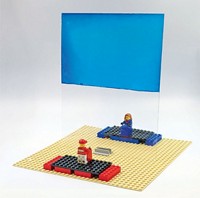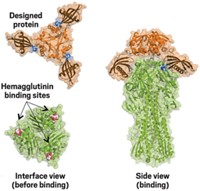Advertisement
Grab your lab coat. Let's get started
Welcome!
Welcome!
Create an account below to get 6 C&EN articles per month, receive newsletters and more - all free.
It seems this is your first time logging in online. Please enter the following information to continue.
As an ACS member you automatically get access to this site. All we need is few more details to create your reading experience.
Not you? Sign in with a different account.
Not you? Sign in with a different account.
ERROR 1
ERROR 1
ERROR 2
ERROR 2
ERROR 2
ERROR 2
ERROR 2
Password and Confirm password must match.
If you have an ACS member number, please enter it here so we can link this account to your membership. (optional)
ERROR 2
ACS values your privacy. By submitting your information, you are gaining access to C&EN and subscribing to our weekly newsletter. We use the information you provide to make your reading experience better, and we will never sell your data to third party members.
Biomaterials
Cleaned pollen shells ready for drug delivery
A modified protocol can remove proteins and other allergenic material from pollen grains
by Alla Katsnelson, special to C&EN
August 8, 2018

Pollen, best known as an immune system irritant that elicits allergic reactions in the form of sneezes and snot, may one day bring medical treatment instead of misery. The strong shells of pollen grains don’t break down on contact with enzymes in the body, and their complex shapes make them stick especially well to cells—which has made researchers wonder if pollen could deliver molecules of interest to a cell. Now, researchers have found a way to clean out pollen grains so that their shells can carry drugs or vaccines instead of allergenic proteins (ACS Biomater. Sci. Eng. 2018, DOI: 10.1021/acsbiomaterials.8b00304).
Harvinder Singh Gill, a chemical engineer at Texas Tech University, and his team believe that pollen grains may be particularly potent for carrying vaccines. Most vaccines are injected, but pathogens generally enter the body through the nose, eyes, and mouth. Delivering vaccines through those same routes could boost their efficacy, Gill says. Also, earlier work by his group showed that empty pollen grains have an adjuvant effect, stimulating a stronger immune response than a vaccine could alone.

An existing cleaning protocol succeeds in emptying out spores from a plant called club moss (Lycopodium clavatum), but when Gill’s group tried it on pollen grains from other types of plants, “we ended up with a sticky mess,” he says. Because pollen grains come in a wide variety of shapes, finding a way to empty out their shells would allow researchers to explore which ones would work best as delivery vehicles.
The existing protocol involves washing the club moss spores in potassium hydroxide followed by phosphoric acid. Gill and his colleagues tried to tweak the process in several ways for pollen grains, without success. Eventually, his team found that reversing the order of the acidic and basic washes produced intact and hollow grains in four different plant species, suggesting the method could be universally applicable. There is no chemistry-based reason to use the base first, Gill says; it’s simply what worked for club moss spores.
Gill can’t explain why switching the acid and base steps works, but he has an idea about what happens during the process. The acid enters the pollen grains through nanochannels that normally allow air and moisture through. As the acid dissolves proteins inside and boosts the solute concentration, water enters by osmosis and builds up the turgor pressure. That pops open larger apertures in the grains through which the dissolved proteins can leave the shell, normalizing the pressure and keeping the grain’s structure intact.
“This new work presents a step forward in being able to more reliably clean the pollen shells while preserving the shape and structure, and processes like these will form an important part of any manufacturing operation that ultimately results,” says J. Carson Meredith, a chemical engineer at the Georgia Institute of Technology.
The next step is to deploy these shells in vaccine delivery, Gill says. His group recently reported that ragweed pollen grains, cleared with this modified protocol, are free of allergens but still induce a long-lasting antibody response in mice, making them potential vaccine adjuvants (Int. J. Pharm. 2018, DOI: 10.1016/j.ijpharm.2018.05.003).





Join the conversation
Contact the reporter
Submit a Letter to the Editor for publication
Engage with us on Twitter